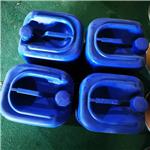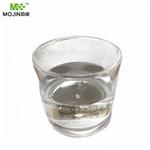- Trichloroacetonitrile
-

- $0.00 / 25KG
-
2025-04-21
- CAS:545-06-2
- Min. Order: 1KG
- Purity: 99%
- Supply Ability: 10 mt
- Trichloroacetonitrile
-

- $50.00 / 1kg
-
2025-03-21
- CAS:545-06-2
- Min. Order: 1kg
- Purity: 99%
- Supply Ability: 20tons
- Trichloroacetonitrile
-

- $48.00 / 1KG
-
2023-05-04
- CAS:545-06-2
- Min. Order: 1KG
- Purity: 99%
- Supply Ability: 200tons
|
| | Trichloroacetonitrile Basic information |
| | Trichloroacetonitrile Chemical Properties |
| Melting point | -42 °C | | Boiling point | 83-84 °C(lit.) | | density | 1.44 g/mL at 25 °C(lit.) | | vapor pressure | 58 mm Hg ( 20 °C) | | refractive index | n20/D 1.441(lit.) | | Fp | None | | storage temp. | Store below +30°C. | | solubility | <0.1 g/100 mL at 21.5°C | | form | Liquid | | color | Clear colorless to very slightly yellow | | Odor | odor of chloral and hydrogen cyanide | | Water Solubility | <0.1 g/100 mL at 21.5 ºC | | Sensitive | Lachrymatory | | Merck | 14,9628 | | BRN | 605572 | | Exposure limits | NIOSH: IDLH 25 mg/m3 | | Dielectric constant | 4.6(60℃) | | Stability: | Stable, but water sensitive. Incompatible with acids, water, steam. May hydrolyze in alkali or acid conditions. Flammable. | | CAS DataBase Reference | 545-06-2(CAS DataBase Reference) | | IARC | 3 (Vol. 52, 71) 1999 | | NIST Chemistry Reference | Acetonitrile, trichloro-(545-06-2) | | EPA Substance Registry System | Trichloroacetonitrile (545-06-2) |
| Hazard Codes | T,N | | Risk Statements | 23/24/25-51/53 | | Safety Statements | 45-61 | | RIDADR | UN 3276 6.1/PG 3 | | WGK Germany | 3 | | RTECS | AM2450000 | | Hazard Note | Toxic/Lachrymatory | | TSCA | Yes | | HazardClass | 8 | | PackingGroup | II | | HS Code | 29269095 | | Hazardous Substances Data | 545-06-2(Hazardous Substances Data) | | Toxicity | LD50 orally in rats: 0.25 g/kg (Smyth) |
| | Trichloroacetonitrile Usage And Synthesis |
| Chemical Properties | colourless to slightly yellow liquid | | Uses | Trichloroacetonitrile is involved as a reagent in Overman rearrangement, which is used to prepare alylic amines from allylic alcohols. It is also used to prepare bistrichloroacetimidates from diols leading to dihyrooxazines through acid catalyzed cyclization. Further, it is utilized in the synthesis of trichloroacetimidates by 1,8-Diazobicyclo[5.4.0]undec-7-ene (DBU) catalyzed addition of allylic alcohols. It finds application in the study of the methoxy methyl (MOM) catalyzed aza-Claisen rearrangement. | | Uses | Insecticide. | | Definition | ChEBI: Trichloroacetonitrile is an aliphatic nitrile and an organochlorine compound. | | Production Methods | Trichloroacetonitrile can be obtained by dehydration of trichloroacetamide with phosphorous pentoxide or by chlorination of acetonitrile with chlorine. Vapor phase chlorination in the presence of water and photochemical chlorination in the presence of catalysts such as HgCl2 or AlCl3 have been reported. Trichloroacetonitrile is an organic intermediate used, for example, in the synthesis of the fungicide etridiazole. | | Reactions | Trichloroacetonitrile is an efficient dehydrating agent for a range of aldoximes, including aromatic and heterocyclic aldoxime, yielding the corresponding nitriles in moderate to good yields. The dehydration reactions can take place in non-acetonitrile media without the aid of a metal catalyst. In addition, it has been confirmed that trichloroacetonitrile was converted into trichloroacetamide in the reaction. Trichloroacetonitrile and triphenylphosphine convert carboxylic acids to acyl chlorides mildly and rapidly under acid-free conditions[1-2].
| | Air & Water Reactions | Highly flammable. Insoluble in water. | | Reactivity Profile | May be sensitive to light and heat. Trichloroacetonitrile may react with water, steam, acid or acid fumes. Trichloroacetonitrile may hydrolyze under acidic or alkaline conditions. . The reaction of benzene and Trichloroacetonitrile evolves toxic chloroform and HCl gasses. (Hagedorn, F., H.-P. Gelbke, and Federal Republic of Germany. 2002. Nitriles. In Ullman Encyclopedia of Industrial Chemistry. Wiley-VCH Verlag GmbH & Co. KGaA.). | | Hazard | Strong irritant to tissue. Questionable carcinogen. | | Fire Hazard | Trichloroacetonitrile is combustible. | | Safety Profile | Poison by ingestion and
intravenous routes. Moderately toxic by
inhalation and skin contact. Human
mutation data reported. A skin and severe
eye irritant. An experimental teratogen.
Other experimental reproductive effects.
When heated to decomposition or in
reaction with water, steam, acid, or acid
fumes it produces toxic fumes of CN-, Cl-,
and NOx. Used as an insecticide. See also
NITRILES and CYANIDE. | | Toxicity evaluation |
Trichloroacetonitrile (TCAN) is a by-product of the chlorine disinfection of water containing natural organic material. When administered by gavage to pregnant Long-Evans rats in a medium-chain triglyceride vehicle, tricaprylin oil (Tricap), at a volume of 10 ml/kg, TCAN induced fetal cardiovascular anomalies at doses as low as 1 mg/kg/d.
Five groups of approximately 20 pregnant female rats received TCAN in CO at 15, 35, 55, and 75 mg/kg/d and in Tricap at 15 mg/kg/d (10 ml/kg closing volume). Corn oil, Tricap, and water served as vehicle controls. Animals were treated by oral intubation on gestation d 6-18 (vaginal plug -= d 0). Five out of 20 dams (75 mg/kg) died during treatment. Adjusted maternal weight gain was lower in females receiving 35 mg/kg TCAN or greater. The mean percent of nonlive implants per litter was elevated at 55 and 75 mg/kg TCAN (CO). The TCAN dose-response curve for fetal (but not maternal)effects was shifted to the right when CO was compared to Tricap. Fetal weight was reduced at 15 mg/kg TCAN (Tricap) and at 55 mg/kg TCAN (CO). When TCAN was administered in CO, the mean frequency of soft-tissue maliformations decreased with significantly fewer septal and great vessel cardiovascular defects observed. The lowest observed adverse effect level for TCAN (CO) was determined to be 35 kg/kg.
| | References |
[1] István Vágó, István Greiner. “A useful acylation method using trichloroacetonitrile and triphenylphosphine for solid phase organic synthesis.” Tetrahedron Letters 43 34 (2002): Pages 6039-6041.
[2] Xiaoyun Ma, Zhengjian Chen, Dan Liu . “Dehydration of aldoximes to nitriles using trichloroacetonitrile without catalyst.” Synthetic Communications 51 21 (2021): Pages 3261-3266.
|
| | Trichloroacetonitrile Preparation Products And Raw materials |
| Raw materials | Phosphorus pentoxide-->2,2,2-Trichloroacetamide | | Preparation Products | Trifluoroacetic acid-->2,5-DIHYDROXYBENZONITRILE-->2,3,4,6-TETRA-O-ACETYL-ALPHA-D-GLUCOPYRANOSYL TRICHLOROACETIMIDATE-->Tetramethoxymethane-->2,3,4,6-Tetra-O-acetyl-beta-D-glucopyranosyl 2,2,2-Trichloroacetimidate-->2-Propynenitrile, 3-phenyl- (9CI)-->BENZYL 2,2,2-TRICHLOROACETIMIDATE-->DIMETHYL PHOSPHOROCHLORIDATE |
|